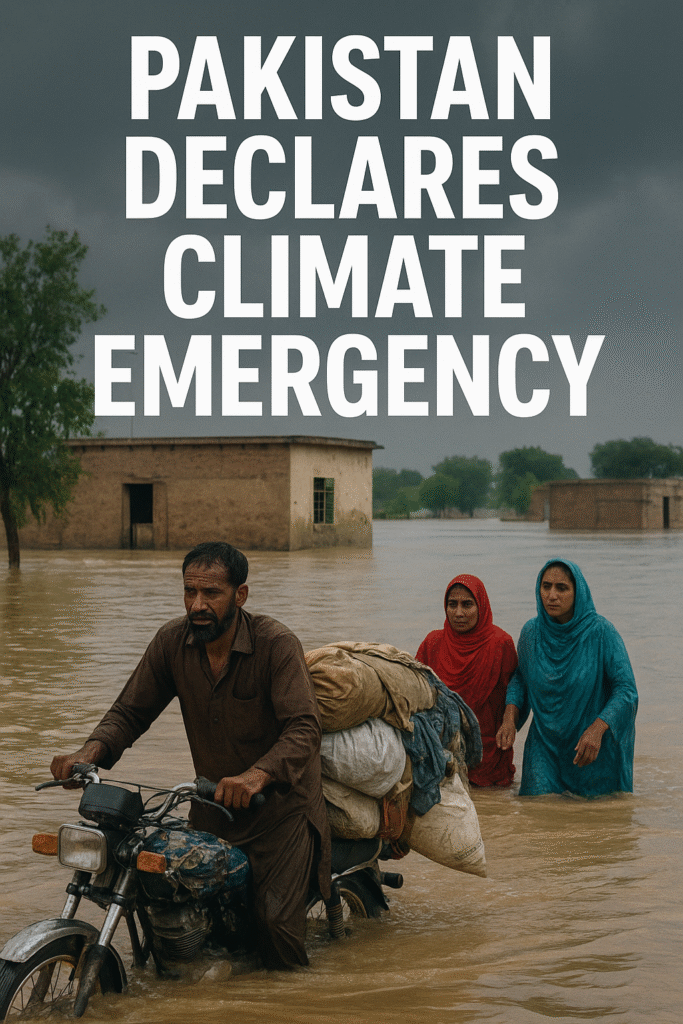Pakistan Declares Climate Emergency After Deadly Floods
Floods Devastate Pakistan’s Vulnerable Communities
Massive floods have destroyed vast areas of farmland and houses in Pakistan. Nearly 40% of Pakistanis live below the poverty line, making the disaster even more severe.
Many families stayed in their homes despite warnings. They feared losing their property to looters if they evacuated. Rescuers later went door-to-door to relocate villagers. Livestock had to be moved by small boats, but this was extremely dangerous.
Rising Death Toll from Rescue Accidents
Tragedy struck during rescue operations. On Tuesday, nine people died when a rescue boat capsized in the Indus River. Just days earlier, five more people lost their lives in a similar boat accident near Jalalpur Pirwala. These incidents highlighted the risks faced by both rescuers and victims.
Impact Across Borders
The floods have also hit neighbouring India. At least 30 people have died there, and more than 354,000 residents have been affected. The scale of destruction shows how the region is struggling with extreme weather.
Relief Efforts in Flood-Hit Areas
Pakistan’s National Disaster Management Authority (NDMA) has delivered relief supplies. These include blankets, tents, and water filtration devices. However, officials warned it may take weeks for floodwaters to recede. Only then can rehabilitation work begin across thousands of villages and farmlands.
International aid is also arriving. The United Nations allocated $5 million to support Pakistan’s relief response. The United States approved funding and sent disaster response experts—the first such assistance during Trump’s second term.
Pakistan’s Climate Vulnerability
Pakistan is highly vulnerable to climate change. The country faces extreme heat, heavy rains, and melting glaciers. New glacial lakes have formed in the north, posing risks of sudden outbursts.
In 2022, heavy monsoon rains caused one of Pakistan’s deadliest flood disasters. Over 1,700 people died, and more than 30 million were affected. Experts say the current floods are another reminder of Pakistan’s fragile geography.
Government Response and Climate Emergency
This week, authorities declared a national climate emergency. Prime Minister Shehbaz Sharif directed officials to prepare a 300-day climate action plan. The plan will focus on disaster preparedness, environmental protection, and sustainable water management.
Conclusion
The floods in Pakistan are not just a natural disaster—they are a warning about the country’s future. With millions at risk, urgent action is needed. Climate adaptation, stronger infrastructure, and international cooperation will be critical in protecting Pakistan’s people from recurring climate catastrophes.



